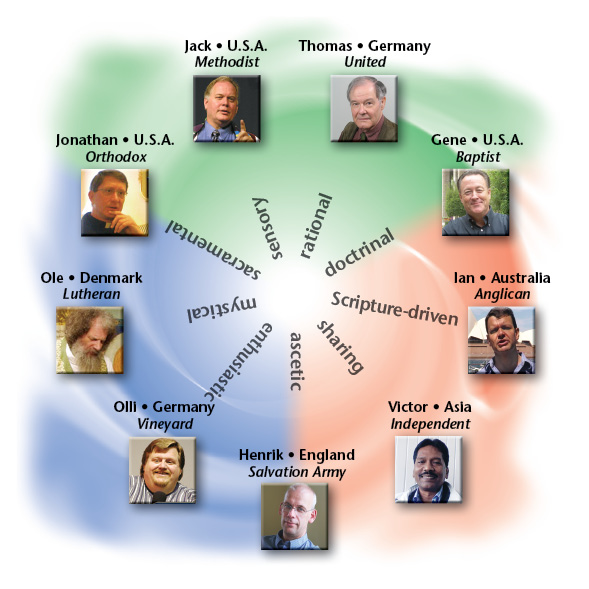T
here is a simple and effective way to learn about a spiritual style: encounter people who have this style. By this, I don‘t mean reading books by authors whom we suspect represent this style. Neither do I mean attending churches that are supposedly marked by a specific style.
What I do suggest is that you find an opportunity where there is direct communication between two people, one who represents style A; the other one, style B. In the third part of this book, under the heading of Mutual Mentoring, I will deal with this kind of learning in more detail, showing how fruitful these dialogues can be if performed on the basis of the Trinitarian Compass (page 182).gun.
 For each of the spiritual styles I have selected a mentor who helped me understand the respective style. In my work with these spiritual mentors, I learned that it is not advisable to try to bridge several significant gaps simultaneously (i.e. differences in spiritual styles plus differences in culture, in gender, etc.). For this reason, most of my mentors are Westerners and male, like me, which enabled me to focus 100 percent on the differences in spiritual style.
For each of the spiritual styles I have selected a mentor who helped me understand the respective style. In my work with these spiritual mentors, I learned that it is not advisable to try to bridge several significant gaps simultaneously (i.e. differences in spiritual styles plus differences in culture, in gender, etc.). For this reason, most of my mentors are Westerners and male, like me, which enabled me to focus 100 percent on the differences in spiritual style.
Who have been your formal or informal spiritual mentors? Are they similar to each other, or quite different?
Further topics in the above chapter of the full version of the book
Mentoring as a lifestyle - How I selected my mentors - Growing in nine different directions-simultaneously - The nature of our communication - Focus: not theology, but spirituality - The whole Christ and different aspects of Christ

